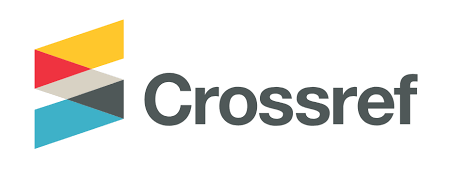EFEKTIVITAS PENDISTRIBUSIAN ZAKAT FITRAH TERHADAP KEMASLAHATAN UMAT DI DESA PANDANARUM KECAMATAN SUTOJAYAN KABUPATEN BLITAR
Keywords:
Distribution, Zakat Fitrah, BenefitAbstract
Distribution is an activity of distributing or distributing goods or services to several people or groups to facilitate the flow of marketing channels, both physical and non-physical. Zakat has a very strategic role in efforts to eradicate poverty and zakat plays a role in the economic development of Muslims. In contrast to other financial sources for development, zakat does not have any return impact except the pleasure and hope of Allah alone. If combined with zakat, the distribution of zakat is the distribution of zakat to people who are entitled to receive it (mustahik) either consumptive or productive with the aim of increasing the welfare of the mustahik. Based on several definitions that have been explained previously, what is meant by Effectiveness of Distribution of Zakat, Infaq and Alms Funds is the process of thinking and analyzing with the aim of measuring the accuracy of the implementation of the distribution of zakat, infaq and alms funds during the Covid-19 pandemic. So the purpose of the title: Effectiveness of distribution of zakat, infaq and alms funds during the Covid-19 pandemic is a way to understand the process and examine the activities of distributing zakat, infaq and alms funds which is useful for knowing the extent to which these funds can be realized. Implementation of appropriate and targeted distribution of zakat, infaq and alms funds can be felt to be beneficial and effective for the community, especially during the Covid-19 pandemic in Pandanarum Village
Downloads
References
Bachorowski, Jo-Anne. 2011. Vocal Expression and Perception of Emotion. Tennessee: Department of Psychology, Vanderbilt University
Barbara Diggs-Brown (May 15, 2011). Strategic Public Relations: Audience Focused Practice, 1st ed.: An Audience-focused Approach. Cengage Learning. Diakses pada 29 Februari 2016)
Bonano, Gilda. 2009. Body Language Mistakes: Gestures, Movement, Posture & Facial Expressions. Stamford, CT and Florham Park, NJ: Confidence. Influence. Success. (Diakses pada 29 Februari 2016. http://www.gildabonanno.com/Pages/BodyLanguageMistakes.aspx)
Cutlip, Scott (1994). The Unseen Power: A History of Public Relations. Lawrence Erlbaum Associates. ISBN 0-8058-1464-7.
Egan, Ellen. 2010. How does body language affect public speaking?. US: My Public Speaking Skill (Diakses pada 29 Februari 2016) http://mypublicspeakingskills.com/talkingpoints/165/how-does-body-language-affect- public-speaking/ )
Graham, Robert. 2006. The Voice Is Mightier Than The Pen: Making the Most of Your Speaking Voice. US: My Public Speaking Skill (Diakses pada 29 Februari 2016) http://mypublicspeakingskills.com/talkingpoints/165/how-does-body-language- affect- public-speaking/ )
Krishnamurthy Sriramesh; Dejan Vercic (September 10, 2012). The Global Public Relations Handbook, Revised Edition. Routledge. p. 994. ISBN 978-1-135-84554-4. Retrieved July.
Downloads
Published
Issue
Section
License
Copyright (c) 2024 Moh. Komarudin, Afrohatul Laili, M. Syaifudin Anwar

This work is licensed under a Creative Commons Attribution-ShareAlike 4.0 International License.









